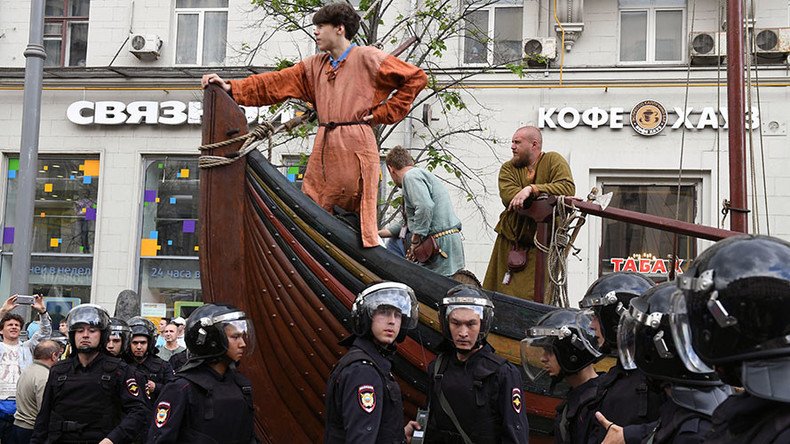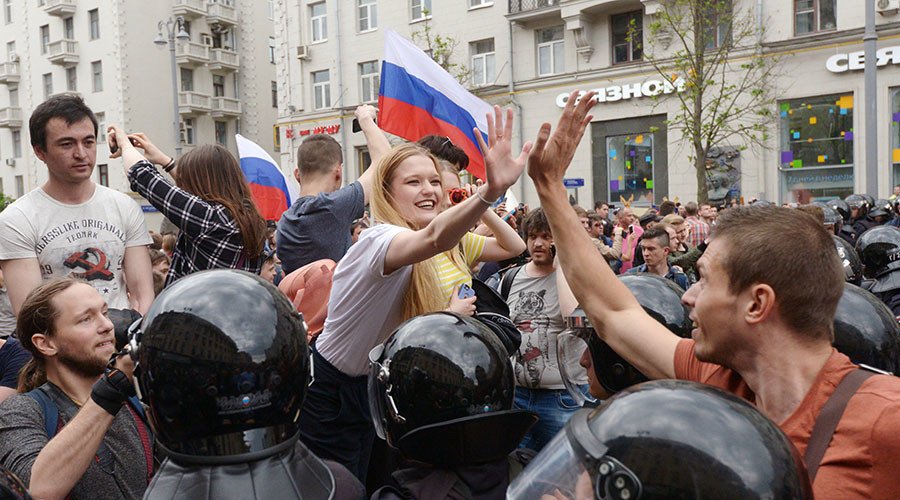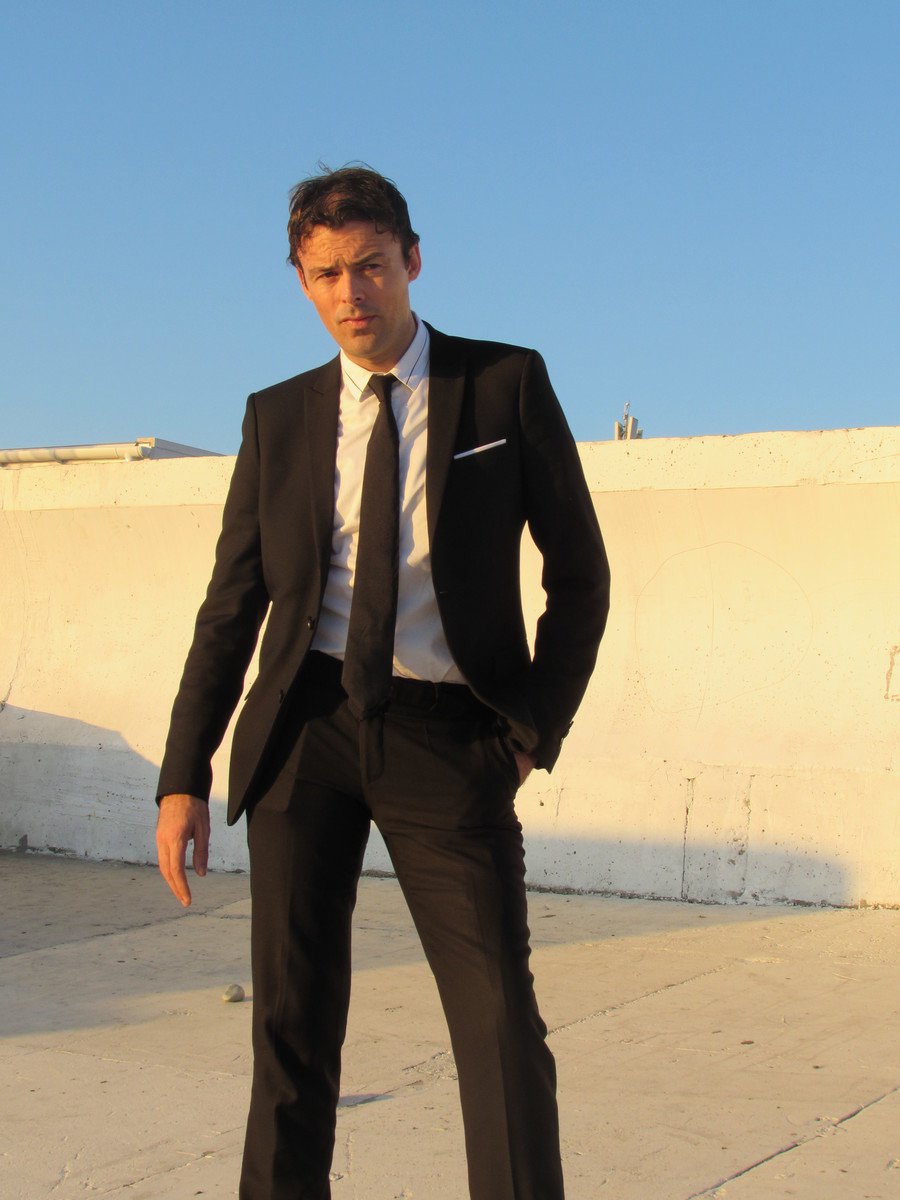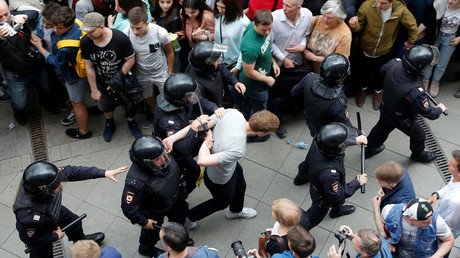Navalny protests: Western media don’t care about facts when cheering their Russian opposition hero

Just when you thought standards couldn’t possibly get any lower in western media coverage of Russia, they somehow did. Reports about Alexey Navalny’s protests on Monday were even more deceitful than usual.
Most of us know that there are two Russias. The one 145-odd million people live in and the version presented in the anglophone press. But rarely has the divide between hack hyperbole and reality been as chasmic as seen in the coverage of this week’s rallies. Not to mention how the publicity granted to their organizer has been consistently over the top.
First, the facts. Navalny is currently polling around 1-2 percent ahead of next year’s presidential election, behind Gennady Zyuganov (5 percent) and Vladimir Zhirinovsky (4 percent), who are absolute dinosaurs. And this is despite the majority of eligible Russian voters being well aware of the opposition figures’ existence. Furthermore, despite his high-profile presence on social media, he is less well known amongst the youth (45 percent) than the general population (55 percent). Which suggests considerable political apathy amongst the young Russians he needs to build some momentum for his movement.
This week, Navalny called for mass protests to take place on the June 12th public holiday, which celebrates modern Russia’s break with Soviet Communism in 1991. He applied for, and was granted, a permit to hold a rally on Moscow’s Sakharova Avenue, a roughly one-mile long thoroughfare which runs from near the Kazanskiy train station to the famous Boulevard Ring. Meanwhile, his regional followers organized similar gatherings across Russia, from Vladivostok to Kaliningrad, which attracted varying degrees of support.
And almost all of these went off entirely peacefully, because they adhered to the relevant local protocols. For instance, the event in Novosibirsk, Russia’s third-largest city, was attended by around 2,000 people and there were no reports of any disturbances. And in Khabarovsk, the distant Far Eastern capital, 300 or so showed up, generating a carnival-like atmosphere outside the Lenin Stadium.

Provoking people
However, in Moscow things were different. Because on Sunday night, Navalny made an unexpected move. Citing difficulties with renting stage equipment, he cancelled his Sakharova gathering and switched the event to Tverskaya, arguably the metropolis’ main street. But the problem with this move was that a war reenactment festival, known as Vremena i Epokhi (Times and Epochs), had already been organized for this area long beforehand, with a couple of hundred thousand visitors expected.
Navalny’s reasoning made little sense. After all, as the liberal blogger Ilya Varlamov pointed out, he could have just bought some speakers in a store. And his story seemed more strange when it emerged on Monday that the public address system he apparently craved was set up in Sakharova and ready for use anyway.
Here's the stage and PA Navalny said he couldn't get - choosing a more chaotic, news-friendly performance pic.twitter.com/3H57qWtxGh
— IvorCrotty (@IvorCrotty) June 12, 2017
Authorities reacted negatively to Navalny’s move. The prosecutor’s office warning how his eleventh-hour reorganization was a “direct violation of the law.” At the same time, even some of his media supporters began to grumble. Meduza’s Kevin Rothrock, an extremely dedicated Navalny proponent, warned how the politician was inviting “more criticisms that he endangers children.” And the liberal TV Rain outlet, albeit quoting Kremlin sources, reported that the last-minute change of plan was caused by fears of a low turnout. With the Tverskaya plan B useful because it would allow Navalny to pretend some Times and Epochs’ attendees were there to support his march.
13:00, Тверская уже заполнена пришедшими на фестиваль Времена и Эпохи #ДеньРоссииpic.twitter.com/mJ98dFM88t
— Вестник Москвы (@NovostiMsk) June 12, 2017
As it happened, the protest turned out to be a pretty damp squib, attracting around 5,000 devotees, who mainly served to annoy the estimated 250,000 folks there for the military reenactments. Navalny himself was detained before he even arrived and charged with promoting an unauthorized rally and disobeying police. And it appears he didn’t miss very much.
To be is to be perceived
But you wouldn’t know that by reading western media reports from Moscow on Monday, as the local hack pack went into overdrive in their latest attempt to weave a silk purse from a sow’s ear. The usual distortion of Navalny’s background was on display, with little or no mention of his right-wing nationalist beliefs. For example, you won’t have read about him equating Muslim migrants to cockroaches or promoting the concept of “Russia for the Russians.” Instead, we have the spectacle of journalists portraying a figure who is far more extreme than Marine Le Pen, Steve Bannon or Nigel Farage as a “liberal.” And doing so in the same outlets that detest that trio.
Then there were the blatant misrepresentations. Such as when New York Times’ bureau chief Neil MacFarquhar and Financial Times’ Eastern Europe Editor Neil Buckley both attempted to depict barriers clearly erected as props for the military history show as “traps” to impede protesters. Tweets they later deleted, in fairness. Nevertheless, this particular “fake news” tweet by the anti-Russia activist Alex Kokcharov has been shared hundreds of times, enjoying retweets from the likes of Economist magazine editor Edward Lucas and Anders Aslund of NATO’s Atlantic Council adjunct.
Yet another example of crap, misinformed Russia analysis on Twitter. These were actually erected for a WW1 re-enactment "Времена и эпохи" pic.twitter.com/4cwxxT0z5R
— Bryan MacDonald (@27khv) June 12, 2017
Almost every correspondent refused to tell followers how the event was “unsanctioned” and “illegal,” instead preferring to act as cheerleaders. Some examples included hacks from Foreign Policy, the Guardian, BBC and the Moscow Times. Meanwhile, Associated Press, the Washington Post, ABC and Fox all managed to omit any mention of the history festival in their reaction to the change of location.
And then there was CNN, always good for a laugh on this beat, breathlessly telling its viewers that hundreds of thousands of demonstrators could be mobilized. When in reality it was around 5,000 in Moscow. And even nationwide, in this vast country, Navalny’s efforts appeared to be in the low five figures. Which tallies with the support levels of around two percent reported by independent opinion pollsters like the Levada Centre.
Aleksey Navalny has very little public support in Russia. But western reporters in Moscow are hoodwinking their readers, viewers and listeners into believing he is far important than he actually is. It’s just further evidence of the extremely low quality of journalism on this beat. A situation which seems to get worse, not better as time goes by.
As for Navalny himself, his game was obvious. On Sunday, he realized a peaceful parade of 5,000 demonstrators was useless for him. And would suggest his movement was floundering. So he went for the jugular. The politician wanted confrontation, to maintain the narrative of the Russian state oppressing the helpless opposition. And his knew his faithful western stenographers would be on hand to deliver the goods. But the reality is their governments would respond precisely the same way to a similar provocation in their capital cities. In fact, with probably rather more force to boot.
The statements, views and opinions expressed in this column are solely those of the author and do not necessarily represent those of RT.














